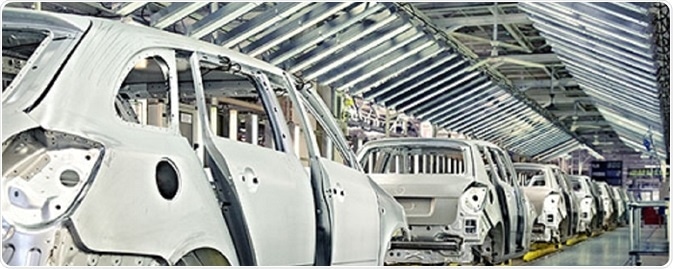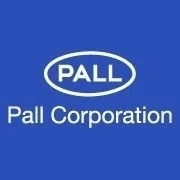Elements of continuous manufacturing have been adopted by most mature manufacturing industries. This is the case for the oil refining, automotive industry, chemicals, food and beverage, pulp and paper and steel industries. This article will outline continuous bioprocessing.

Image credit: Pall Corporation
If it can process a continuous flow input for a prolonged period of time, then a manufacturing unit operation is considered continuous. The output can be continuous or discretized in small packets created in a cyclic manner1.
Why adopt continuous bioprocessing?
Process intensification was the most crucial driver for these industries to adopt continuous manufacturing. This led to a reduction of the capital investments required to determine manufacturing capacity.
They also realized significant savings in the consumption of auxiliary materials (chemicals and water), cycle times, waste production and energy consumption. Continuous manufacturing has actually been one of the key enablers to make some technologies available to a larger audience.
Automobiles are a good example of this. It was only after Ford Automobile introduced the conveyor belt manufacturing platform for its Model T that these only became affordable to the majority of the population.
What does it offer to the pharma sector?
The biopharmaceutical industry has always been known as an industry that is research-based. During process innovation and development, manufacturing costs are not the main driving force.
Yet, the biopharmaceutical landscape is becoming more competitive with the rise of biosimilars and the availability of multiple therapies targeting the indication, and so manufacturing costs have become a more relevant business factor.
The history of penicillin shows how a combination of improved analytical techniques, technical advancements and business drivers can influence the prices of medicines.
Over around 60 years, the price of penicillin dropped by four orders of magnitude from approximately $200,000 per billion units in 1939 to approximately $20 per billion units in 19952.
It is highly unlikely that similar dramatic changes in monoclonal antibody manufacturing will be seen, but it should serve as an inspiration for all scientists who are working towards enhancing bio-manufacturing efficiencies.
Continuous cell culture processes or perfusion cell culture processes have been utilized for monoclonal antibody production (among others) since the early days of biopharmaceutical industries. However, until about a decade ago, continuous downstream processing did not receive any attention.
As downstream does not have to deal with the genetic stability of the cell line, one could argue to a certain extent that this is odd. Instead, the conversion of batch to continuous downstream processing is mainly an engineering challenge.
The reason for this phenomenon is due to the fact that upstream processing was the limiting factor in the early days of biopharmaceutical manufacturing. The driver to consider continuous downstream processing technologies is very low, with titers still being less than or around 1 mg/mL.
The expression levels of monoclonal antibodies in suspension cell culture reached levels where commercial amounts could be produced in much smaller (single-use) bioreactors during the first two decades of the 21st century. This began the era of process intensification in biopharmaceutical manufacturing.
Yet, there was limited room for more enhancement of the specific productivity in batch processing in downstream processing. Continuous downstream processing technologies became an intriguing direction for further process intensification because of this.
Jörg Thommes introduced the first ever case study on the potential effect of multicolumn chromatography for the Protein A capture step in 2003.3 It would be years before the first technical solution that would be suitable for implementation in a biopharmaceutical manufacturing platform would become available.
A number of promising solutions for multicolumn chromatography processes have been introduced since 2009, which all rely on similar concepts. Over subsequent years, the most promising solutions were translated into process scale systems which were eventually used in cGMP manufacturing.
Solutions for other steps also gained more traction as a solution for continuous chromatography became available. This included continuous virus inactivation and single-pass tangential flow filtration.
This enabled end-users to create end-to-end continuous processing platforms for monoclonal antibody production. The first monoclonal antibody created in an integrated end-to-end production platform received approval to begin Phase 1 clinical trials in 2019.5
About Pall Corporation

Pall Corporation is a global leader in high-tech filtration, separation and purification, serving the diverse needs of customers across the broad spectrum of life sciences and industry.
Pall Life Sciences provides cutting-edge solutions for customers who discover, develop and produce biotech drugs, vaccines, cell therapies and classic pharmaceuticals.
Our advanced medical technologies are often a patient’s last line of defense from dangerous pathogens. And our food and beverage products provide critical protection from contaminants during various manufacturing steps.
Pall Industrial serves customers in the microelectronics, aerospace, fuels, petrochemical, chemical, automotive, and power generation industries.
Our products play key roles in:
- Manufacturing innovative semiconductors and consumer electronics
- Filtration for commercial and military aerospace vehicles
- Maintaining reliability of essential industrial equipment
- Addressing mounting water quality, scarcity and demand issues
- Helping energy companies maximize production and develop commercially successful next generation fuels
Headquartered in Port Washington, New York, Pall has offices and plants throughout the world.
For more on how we enable a greener, safer future, visit Pall - Enabling A Greener, Safer Future.
Sponsored Content Policy: News-Medical.net publishes articles and related content that may be derived from sources where we have existing commercial relationships, provided such content adds value to the core editorial ethos of News-Medical.Net which is to educate and inform site visitors interested in medical research, science, medical devices and treatments.